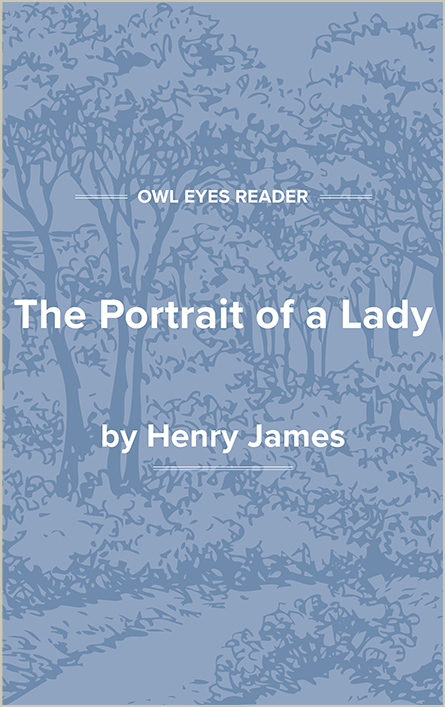Study Guide
Summary
The Portrait of a Lady is James’s first unarguably major work. Technically his third novel (though the early Watch and Ward, published in 1871, is by general agreement unworthy of mention), it represents a quantum leap in sophistication and moral complexity over Roderick Hudson and The American.
Thematically continuous with Daisy Miller in that it treats the perils of an innocent American woman abroad, the novel probes the psychology of its heroine, Isabel Archer, to infinitely greater depths than does the earlier novella. The reader first encounters Isabel Archer at the English country house of the Touchetts. Isabel’s aunt, Lydia Touchett, has brought her from the United States after the death of Isabel’s father. Pursued by the feckless British aristocrat Lord Warburton and the crude American Caspar Goodwood, Isabel is also admired by her invalid cousin, Ralph Touchett, who gives her an enormous bequest from his father’s estate.
While visiting her aunt in Italy, Isabel meets Madame Merle, an elegant, cultured woman who maintains a respectable life by imposing on the hospitality of her wealthy acquaintances. Madame Merle introduces Isabel to Gilbert Osmond, an American expatriate living in quiet retirement in a Roman villa with his daughter Pansy. Disarmed by Osmond’s cultivation and taken with Pansy, Isabel accepts Osmond’s offer of marriage, only to discover that he has effectively imprisoned her and, to her immense dismay, that he was formerly Madame Merle’s lover and Pansy is their illegitimate offspring. Isabel realizes that any attempt to sunder their bond will lead to Pansy’s suffering; as she genuinely cares for Pansy, she is caught on the horns of a classic Jamesian moral dilemma.
Summoned to England to see her dying cousin Ralph, Isabel encounters both Lord Warburton, who offers to marry her (she declines), and the egregious Caspar Goodwood, who in a rare scene of explicit passion in James, forcefully embraces Isabel:His kiss was like white lightning, a flash that spread, and spread again, and stayed; and it was extraordinarily as if, while she took it, she felt each thing in his hard manhood that had least pleased her, each aggressive fact of his face, his figure, his presence, justified of its intense identity and made one with this act of possession. So had she heard of those wrecked and under water following a train of images before they sink. But when darkness returned she was free....
(The entire page is 628 words.)
Owl Eyes subscribers get unlimited access to our expert annotations, analyses, and study guides on your favorite texts. Master the classics for less than $5/month!

